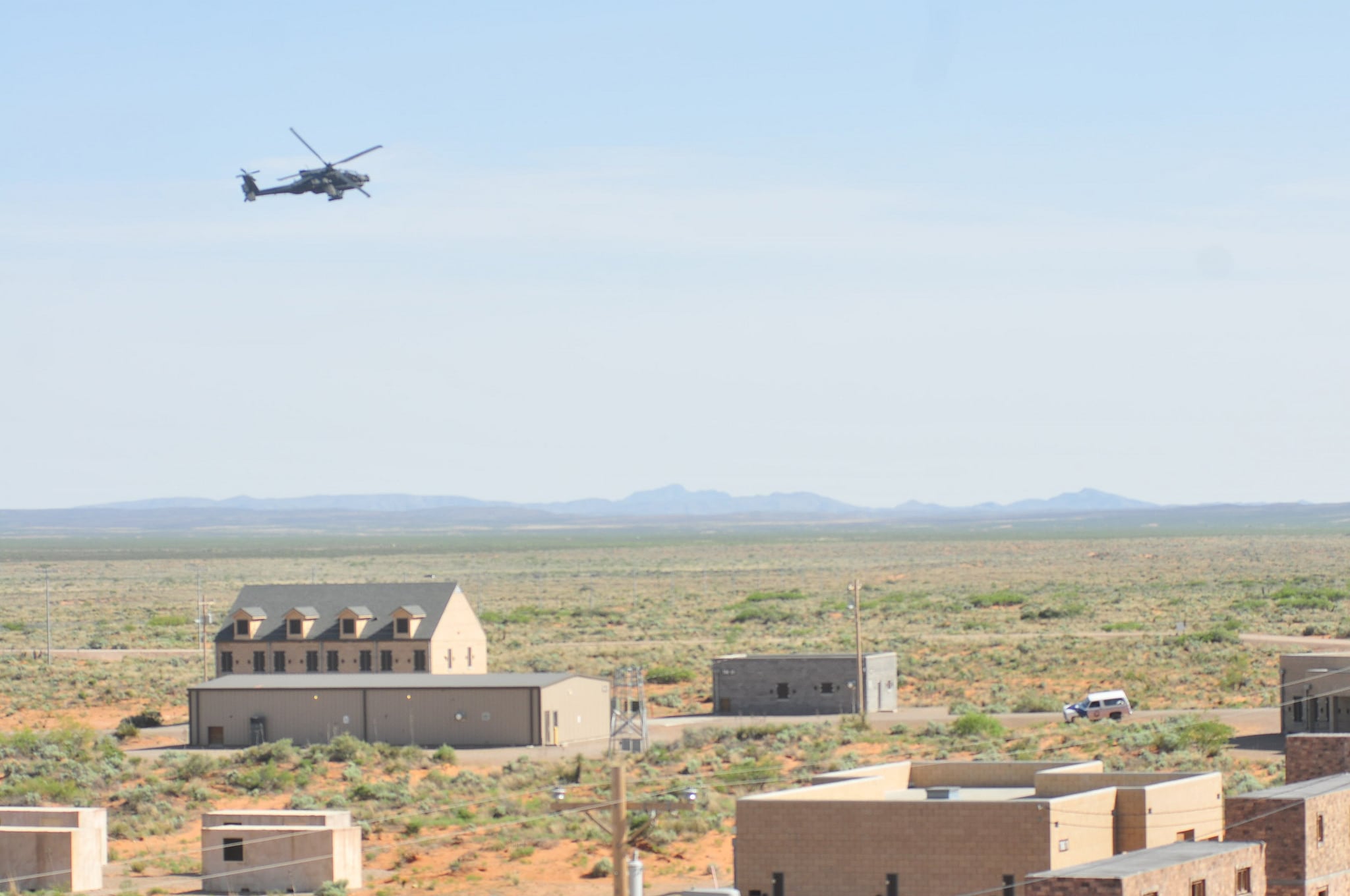Soldiers in the first AH-64 Apache unit to receive Shadow unmanned aerial systems are training hard to work out the kinks in preparation for their deployment this summer to the Middle East.
The 1st Armored Division's 3rd Squadron, 6th Cavalry Regiment will deploy in August to Kuwait in support of Operation Spartan Shield. This will be the unit's first deployment in its new configuration — just under 500 soldiers from Fort Bliss, Texas, will deploy along with 12 Shadows. The unit will fall in on 24 Apaches already in theater.
The squadron, which was reflagged March 16 from 1st Battalion, 501st Aviation Regiment, was the first of 10 Apache units to receive the Shadow. This made it the first Apache battalion to be converted to a heavy attack reconnaissance squadron.
"These are really exciting times for us, turning science fiction into reality almost," said Capt. Jeremy Paquin, commander of the squadron's Bravo Troop. "We continue to improve every day."
The conversion added three platoons of RQ-7 Shadow unmanned aerial systems to the unit and is part of the Army's five-year Aviation Restructuring Initiative. Part of the restructure eliminates the OH-58 Kiowa Warrior, the venerable armed scout reconnaissance helicopter, from the Army's inventory.
Having Shadows organic to the squadron is "a new capability, and with any new capability, it takes a lot of work to work out the kinks," Paquin said.
One example is the new avionics software that gives the Apache crews "near-simultaneous, near-instantaneous" ability to see what the Shadows are doing.
"It's not intuitive, we have to practice," Paquin said.
Since the beginning of the year, the squadron has conducted four major training events that have "helped to hone our pairing of the Apaches and the Shadows," said Command Sgt. Maj. Terri Clavon, the squadron's senior enlisted soldier.
To start, the Shadow operators and maintainers spent months learning the unmanned aerial system. The squadron then conducted Operation Heavy Shadow, where the Apaches and Shadows flew together so the soldiers could learn how to better work together, Clavon said. It was the first ever tactical exercise to team Apaches and Shadows organically.
The crews then moved up to manned-unmanned teaming exercises, where for the first time an Army heavy attack reconnaissance squadron used Shadows to point out targets during a live-fire training, he said.
"Our Shadows were instrumental in providing remote laser designation for our Apaches, allowing them to stand off and get greater lethality from a larger stand-off distance," Clavon said.
The final piece of training was over-water training at Marine Corps Air Station Miramar in California.
"It allowed our troops to fly the aircraft and get used to that tough environment of flying over the ocean, where there aren't a lot of points to give you visual references," Clavon said. "This way they can be better trained and ready for their follow-on missions and provide a better force for the environment we are going to be going to."

An AH-64 Apache helicopter from 3rd Squadron, 6th Cavalry Regiment conducts a raid over a training village at Fort Bliss, Texas, in April during Operation Heavy Shadow, the first operational exercise pairing 3-6's Apaches with its RQ-7B Shadow unmanned aircraft systems.
Photo Credit: Sgt. Alexander K. Neely/Army
The soldiers are picking up lessons learned and tactics, techniques and procedures as they go along, said Chief Warrant Officer 4 Shaun Breth, the standardization instructor pilot for 3rd Squadron.
"The biggest part from my side is incorporating the Shadow operations with the manned attack operations we already conduct," Breth said. "We're trying to better synchronize each of our training events to pair our missions together to make us more lethal and effective on the battlefield."
Having the Shadows organic to the squadron has made operations more efficient, Breth said.
It also has pushed for a different mindset.
"We're working on a hunter-killer concept," Paquin said. "The Shadow is the hunter, the Apache is the killer. We're really bringing the Shadow operator away from the mindset of [intelligence and surveillance] to a gun pilot mentality. They're there to support the ground force commander."
The Apache pilots and Shadow crews have benefited from being in the same unit and working together so closely, Clavon said.
"A lot of times previously, they didn't get that real understanding of how the guys in the aircraft wanted the sensors employed," he said. "But now with these guys working directly with us, going to weekly pilots' briefings, getting updates and understanding how the guys in the aircraft are actually employing the Apache helicopter, they can be an added tool for adding to the lethality of our systems."
So far, the feedback from the Apache and Shadow crews has been positive, said Lt. Col. RJ Garcia, the squadron commander.
"Both groups really see the potential — the realized potential and the future potential — of manned-unmanned training," he said. "We learn something new every day on how we can do this better."
His soldiers are "breaking ground" on manned-unmanned tactics, techniques and procedures, Garcia said.
"That's really the future of how we're going to operate," he said, adding that they're already sharing lessons learned with other Apache units preparing to integrate the Shadow.
"The capability we bring to any operation is increased efficiency, lethality and effectiveness," he said.
Michelle Tan is the editor of Army Times and Air Force Times. She has covered the military for Military Times since 2005, and has embedded with U.S. troops in Iraq, Afghanistan, Kuwait, Haiti, Gabon and the Horn of Africa.



